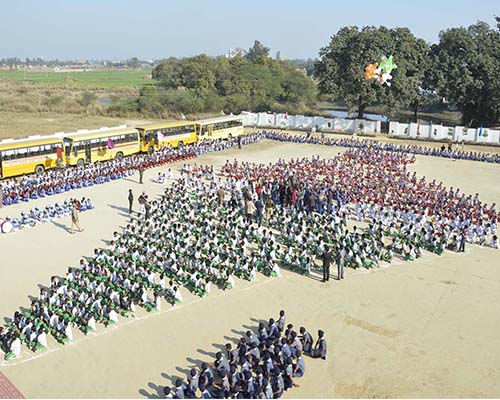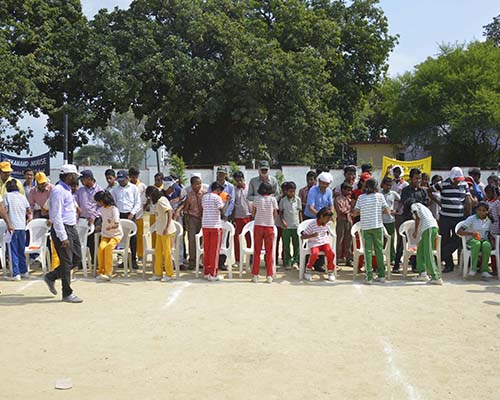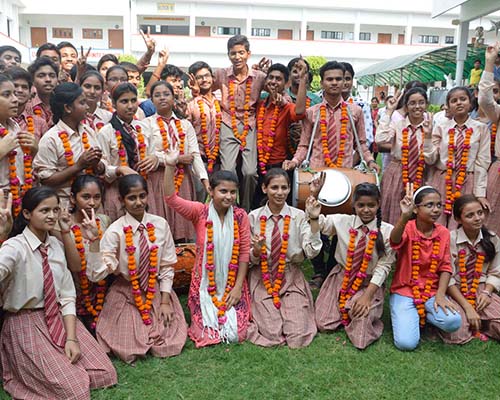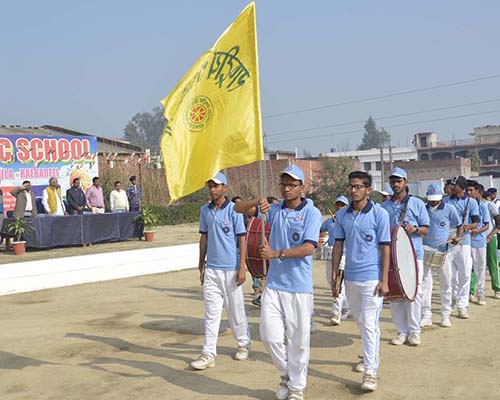

Education in its general sense is a form of learning in which knowledge, skills, and habits of a group of people are transferred from one generation to the next through teaching, training, research, or simply through auto didacticism. Generally, it occurs through any experience that has a formative effect on the way one thinks, feels, or acts.
Systems of schooling involve institutionalized teaching and learning in relation to a curriculum, which itself is established according to a predetermined purpose of the schools in the system. Schools systems were also based on people's religion giving them different curricula.
In formal education, a curriculum is the set of courses and their content offered at our schools. By referring to the course of deeds and experiences through which children grow to become mature adults. Our curriculum is prescriptive, and is based on a more general syllabus which merely specifies what topics must be understood and to what level to achieve a particular grade or standard. Our academic discipline is a branch of knowledge which is formally taught, either at the schools or via some other such method. Each discipline usually has several sub-disciplines or branches, and distinguishing lines are often both arbitrary and ambiguous. Examples of broad areas of academic disciplines include the natural sciences, mathematics, computer science, social sciences, humanities and applied sciences. Schools may incorporate fine arts like music, dance, and theater, as part of K-12 grade curriculums or within majors at schools and universities as electives. We apply both instructional approaches i.e. inductive and deductive



Primary (or elementary) education consists of the first 5-7 years of formal, structured education by adopting pedagogical system. In general, primary education consists of six or eight years of schooling starting at the age of four to six, although this varies between, and sometimes within, countries. At the end of the primary school, students should
In most contemporary educational systems of the world, secondary education comprises the formal education that occurs during adolescence. It is characterized by transition from the typically compulsory, comprehensive primary education for minors, to the optional, selective tertiary, "post-secondary", or "higher" education for adults.



All students must learn the advanced skills that are the key to success in college and in the 21st century workplace. Every student should take demanding classes in the core subjects of English, history, science, and math; and no student should ever get a watered-down course of study. Further, students should also be given the opportunity to earn industry certification or some college credit while in high school through programs such as Advanced Placement, International Baccalaureate, or those offered through a local college or university.
Every high school should be small enough—or divided into small enough units—to allow teachers and staff to get to know all students as individuals and to respond to their specific learning needs. By the ninth grade, student should have a detailed plan for graduation—identifying the specific courses they must take, opportunities they should pursue, and extra help they need in order to succeed in high school and beyond. And every student should receive frequent and ongoing support from at least one academic advisor throughout their high school years.
Every high school should have a system in place to identify kids as soon as they start to struggle in reading, math, or any core subject, and every school should reserve time and resources for the immediate help those kids need to stay on course.
High schools should help students make the connection between book learning and the skills needed to be successful in life. Students must develop the work habits, character, and sense of personal responsibility needed to succeed in school, at work, and in society. As part of their class work, students should have opportunities to design independent projects, conduct experiments, solve open-ended problems, and be involved in activities that connect ` school to the rest of the world.
Students thrive when their high schools encourage positive learning relationships among families, educators, faith groups, civic organizations, businesses and other members of the community. Parents should have many chances to visit the school building, talk with teachers and staff, voice concerns, share ideas, serve as volunteers, and suggest ways to improve the school. And school leaders should reach out to their neighbors by attending community events and forming partnerships with local organizations in order to increase effectiveness and tap additional resources.
Every high school must guarantee the safety of its students, teachers, staff, and visitors, and every school should be kept free of drugs, weapons and gangs. School leaders should build a climate of trust and respect, they should encourage peaceful solutions to conflict, and they should respond directly to any bullying, verbal abuse, or other threats.
Every high school teacher should know well the subjects they teach and should know well how to teach all kinds of students, from all kinds of backgrounds. New teachers should get the guidance and mentoring they need to be successful in the classroom. All teachers should have enough time to plan lessons, carefully review student performance, and continuously improve their teaching. Strong Leaders Every high school needs a skillful principal, one who supervises personnel effectively, manages finances capably, and keeps the organization running smoothly. Every school also needs a strong educational leader (this could be the principal, a senior teacher, or another staff member), to define a vision of academic excellence, work with teachers to develop an engaging and coherent curriculum, and serve as a mentor and role model for teachers and students alike.
Every high school should provide all students and teachers with the books, computers, laboratory equipment, technology, and other resources they need to be successful. And every school should maintain safe, clean facilities that are fit for teaching and learning
All community members should have easy access to information that gives a clear, straightforward picture of how well the school is serving all of its students, including those from every income level, ethnic group, and racial background. Some of the key pieces of information include a school's graduation requirements, graduation and dropout rates, and student performance on state tests
Higher education has taken on enormous importance for our society. Preparation for jobs and career is seen as the primary role for higher education, but the public also stresses the importance of general skills such as maturity and getting along with others.
Instruction is the facilitation of another's learning. Instructors in primary and secondary schools are often called teachers, and they direct the education of students and might draw on many subjects like reading, writing, mathematics, science and history etc. Instructors in post-secondary institutions might be called teachers, instructors, depending on the type of school; and they primarily teach only their specific discipline. The quality of teachers is the single most important factor affecting student performance, and that schools which score highly on exams/tests have multiple policies in place to ensure that the teachers they employ are as effective as possible.
India the colorful and vibrant land is as diverse as its people. The mosaic of art and culture, potpourri of tradition, India stands as one of the oldest living civilization which offered to the rest of the world the elemental sound ‘aum’, the concept of zero and the richness of yoga. A treasure of art and culture, India is just not a land but the storehouse of beauty, dream, tradition and verve
As faculty, staff, and students of our Schools of Forestry & Environmental Studies, we affirm our commitment to responsible stewardship of the environment of our schools, our colleges, the city, and the other sites of our teaching, research, professional, and social activities. In the course of these activities, we shall strive to:
Each member of the School community is encouraged to set an example for others by serving as an active steward of our environment.
Food & Water Watch is an important program of organization and consumer rights group which focuses on corporate and government accountability relating to food, water. Food and Water Watch employs a four pronged effort focusing on public and policymaker education, lobbying, media, and Internet activism.
Our Schools are responsible for your child’s safety while they’re at school or on a school trip. Contact to school if you’re worried about your child’s health and safety. Schools are responsible for day-to-day health and safety whenever your child is in the care of school staff - this includes school trips and events. Every school has a health and safety policy. Ask the school if you want to read it. It should contain details of what the school is responsible for, school trips as well as what they should do to look after your child. Schools must follow the same health and safety law for indoor temperature as other workplaces.